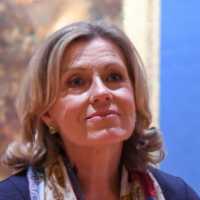Vander Elst is the managing director, Europe for Epic. Prior to joining the non-profit start-up, she worked for 15 years in the private sector as a communications and brand strategist.
Her greatest challenge at work is twofold, she says: not just getting people to give, but give smarter. When people donate without thinking about it strategically, they reduce the impact of their giving. To avoid this, she wants them to take a more considered approach.
An example of how people can be less strategic in their giving is the way they donate money for big-ticket tangible items. “People love raising money for, say, a bus to take children to school. But they don’t like giving money to pay the bus driver’s salary or bus maintenance or insurance so three years later the bus you bought is up on concrete blocks.”
Ms Vander Elst adds, “The very best way of giving is to give unrestricted grants that can be spent on things like the bus driver’s salary. This is why, at Epic, when an organisation joins our portfolio, we ensure them unrestricted financial support for at least three years.
This allows charities to plan strategically and better allocate their resources to help local communities. Basically, we want to help people give smarter.”
Fortunately, she adds, giving is becoming more professional, more global in outlook and more technologically enabled. The last of these, particularly, has improved transparency and allows people to choose charities which are more effective.
At Epic: “We identify outstanding charities for children and young adults and provide a label a bit like Standard & Poor’s. We allow people to follow the money and be confident in how their donations are being used.
Moreover, when people and companies give to Epic, 100% of their donations go directly to our portfolio organisations, as Alexandre Mars, the founder and CEO, covers the operating costs. It’s all about inspiring confidence to make giving a more painless, enjoyable and habitual act.





